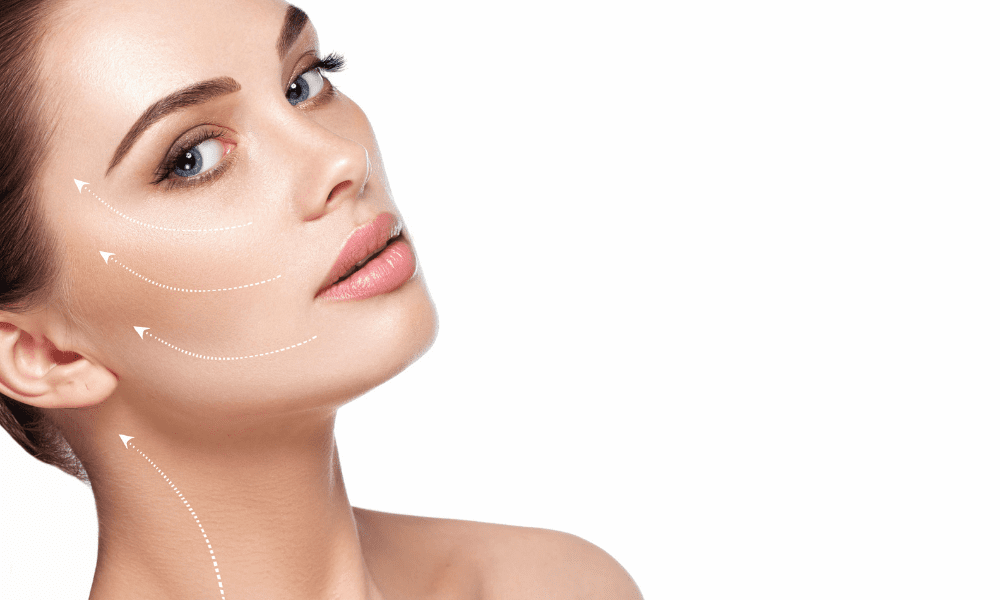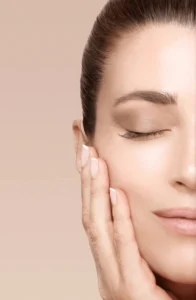Taking care of your skin is one of the most important aspects of self-care. A consistent skincare routine not only helps you look and feel your best but also ensures your skin stays healthy, youthful, and glowing. Whether you’re a skincare beginner or a seasoned enthusiast, understanding the basics of skincare, along with the products and steps involved, can lead to noticeable improvements in your complexion.
Why Is Skincare Important?
Your skin is the largest organ in your body, serving as a protective barrier against external factors like pollutants, harmful UV rays, and infections. A well-maintained skincare routine helps:
- Hydrate and moisturize the skin
- Prevent premature aging
- Maintain a balanced complexion
- Combat acne, redness, and other skin issues
- Keep skin soft, smooth, and clear

Understanding Your Skin Type
The first step in any skincare routine is understanding your skin type. This will help you choose the right products and ingredients for your unique needs. There are five main skin types:
- Normal: Balanced skin that is neither too oily nor dry. It feels comfortable throughout the day without excessive shine or flakiness.
- Oily: Skin that produces excess sebum (oil), leading to a shiny appearance, particularly on the forehead, nose, and chin (T-zone). Oily skin is prone to acne and clogged pores.
- Dry: Skin that feels tight, flaky, or rough, especially after cleansing. Dry skin lacks moisture and can appear dull.
- Combination: A mix of different skin types in different areas of the face. The T-zone may be oily, while the cheeks are dry or normal.
- Sensitive: Skin that reacts easily to products, often becoming red, irritated, or inflamed. It may be prone to conditions like rosacea or eczema.
Basic Skincare Routine
A solid skincare routine consists of a few essential steps, which can be tailored to fit your individual needs. Here’s a general outline of an effective skincare regimen:
1. Cleansing
Cleansing is the first and most important step to remove dirt, oil, sweat, and makeup from the skin. Using a gentle, non-stripping cleanser is key to avoiding irritation or dryness.
- For oily skin: Opt for a foaming or gel cleanser with ingredients like salicylic acid or charcoal to help control excess oil.
- For dry skin: Use a cream-based or hydrating cleanser that won’t strip your skin of its natural moisture.
- For sensitive skin: Choose a fragrance-free and gentle cleanser that won’t cause irritation.

2. Toning
Toners help to balance the skin’s pH levels after cleansing and can prepare the skin for better absorption of serums or moisturizers. Depending on your skin’s needs, toners can be hydrating, exfoliating, or soothing.
- For oily skin: Use an alcohol-free toner with ingredients like witch hazel or tea tree oil.
- For dry skin: Go for a hydrating toner with ingredients like glycerin or aloe vera.
- For sensitive skin: A calming toner with chamomile or rose water can help soothe irritation.
3. Serums and Treatments
Serums are concentrated formulas that address specific skin concerns like acne, fine lines, hyperpigmentation, or dullness. Choose a serum that targets your skin’s needs, such as:
- Vitamin C: Brightens the skin and protects against environmental damage.
- Retinol: Reduces fine lines and acne breakouts.
- Hyaluronic Acid: Provides deep hydration and helps plump the skin.
- Niacinamide: Reduces redness, irritation, and dark spots.
4. Moisturizing
Moisturizing is crucial for keeping your skin hydrated and maintaining its barrier function. Even if you have oily skin, using a lightweight moisturizer is essential to prevent dehydration and maintain a healthy complexion.
- For oily skin: Opt for a gel-based or oil-free moisturizer.
- For dry skin: Choose a rich, emollient cream with nourishing ingredients like shea butter or ceramides.
- For sensitive skin: Pick a fragrance-free, soothing moisturizer with ingredients like chamomile or calendula.
5. Sunscreen
Daily sunscreen application is non-negotiable in any skincare routine. Sunscreen helps protect your skin from harmful UV rays that cause premature aging, hyperpigmentation, and increase the risk of skin cancer.
- Choose a broad-spectrum sunscreen with SPF 30 or higher.
- Reapply every two hours when exposed to the sun for long periods.
Optional: Exfoliating
Exfoliation helps remove dead skin cells, revealing a smoother and brighter complexion. It should be done 1–2 times a week, depending on your skin type. Be gentle with exfoliation, as overdoing it can lead to irritation.
- For oily skin: Use a chemical exfoliator with salicylic acid or glycolic acid.
- For dry skin: Opt for a gentle scrub or an enzyme-based exfoliator.
- For sensitive skin: Stick with mild exfoliating products like lactic acid or avoid physical exfoliants.
- Key Ingredients to Look For
When choosing skincare products, the ingredients matter. Here are some essential ingredients to look for based on skin needs:
- Hyaluronic Acid: Draws moisture into the skin and provides hydration.
- Salicylic Acid: A BHA that helps treat acne and unclogs pores.
- Niacinamide: Reduces inflammation, improves skin texture, and brightens dark spots.
- Vitamin C: Brightens the skin and provides antioxidant protection.
- Retinol: Stimulates collagen production and reduces the appearance of wrinkles.
- Peptides: Help repair skin and promote firmness and elasticity.
Tips for Healthy Skin
- Stay Hydrated: Drink plenty of water throughout the day to maintain healthy, glowing skin.
- Avoid Touching Your Face: This can transfer bacteria, oil, and dirt, leading to breakouts.
- Get Enough Sleep: Sleep allows your skin to repair and regenerate overnight.
- Eat a Balanced Diet: A diet rich in fruits, vegetables, and healthy fats can promote radiant skin.
- Be Consistent: Consistency is key. Stick to your skincare routine for several weeks to see noticeable improvements.
Conclusion
Skincare is a journey, and finding the right products and routine for your skin may take some trial and error. Be patient, and remember that what works for someone else may not necessarily work for you. With the right approach, you can achieve healthy, glowing skin at any age. So take time to care for your skin—after all, it’s the only one you’ve got!













